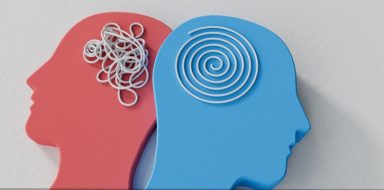Everything in Moderation, Including Milk
There’s a reason why milk has a significant section in the grocery store and why the price of milk is the base for how we gauge the cost of living. Milk is an essential part of our children’s diet. Due to its high protein, calcium and vitamin D content, milk is crucial for the growth of a toddler by helping to build healthy bodies quickly. But, can a toddler drink too much milk?
Milk contains high amounts of calcium. A toddler’s body needs calcium to build strong bones and to form muscle tissue. Calcium is necessary for muscles and nerves to develop and it also releases hormones and enzymes. The body sees these needs as essential, so if calcium levels are low, then the body removes calcium from the bones to keep the rest of the body working. Vitamin D is calcium’s helper. It ensures the absorption of calcium and other bone and muscle-building nutrients. Too little of either calcium or vitamin D in toddlers can lead to physical concerns regarding bone formation.
In babies and toddlers, not enough calcium or vitamin D can lead to rickets, which is a bone disease where the bones become malformed and soft, causing bowing of the legs, diminished growth and muscle weakness.
Toddlers and Drinking Milk
Toddlers typically transition from breast milk to whole cow’s milk at about 12 months. Not only is milk an excellent source of the calcium and vitamin D, but whole milk is also a good source of dietary fat, which is necessary for adequate brain development.
Although some parents may be concerned about cow milk’s fat content and their toddler’s possible lactose intolerance, there is no need to worry. The saturated fat within milk is beneficial for toddlers. It’s also rare for lactose intolerance to occur in children below the age of five, though it can happen. Lactose intolerance is not the same as a milk allergy (which involves the immune system). Lactose intolerance is typically not a life-threatening issue, but allergies can be. It’s a digestive issue that can be uncomfortable and it usually appears late in childhood or adolescence; it can also become a problem in adulthood. A milk allergy, however, appears during a baby’s first year.
Recommended Dietary Amounts of Milk for Toddlers
Even though milk is good for your toddler, there are recommended amounts. Here’s what the American Academy of Pediatrics (AAP) suggests.
At 12 months, toddlers should be given about two servings of dairy per day, which is approximately 16 to 24 ounces of whole milk each day. This amount translates to 8 ounces in 1 cup, for a maximum amount of 4 cups each day. For toddlers from 12 to 24 months, whole milk is recommended due to its fat content. During this small window of time, brain development is rapid and the saturated fats in whole milk promote overall brain development. During this age, whole milk is usually recommended unless there is a strong family history of heart disease or obesity.
From two to three years of age, toddlers should be given about two servings of dairy per day. At two years of age, toddlers can gradually transition to reduced-fat or low-fat milk. Although, keep in mind, it is important to keep milk consumption to less than 32 ounces per day to prevent excessive milk intake.
Separation anxiety in toddlers happens when a child experiences intense worry when being away from a caregiver. Here's how you can help them.
Excessive Milk Consumption Side Effects
It’s always possible to have too much of a good thing. Milk is no different. Drinking too much cow’s milk can result in iron deficiency anemia due to several factors.
One factor is a toddler’s digestive development. Toddlers do not have a fully developed digestive tract. Too much cow’s milk can damage the intestinal lining and cause blood loss, leading to the loss of iron.
Too much milk can make it difficult for the body to absorb the iron it does receive from other sources. Cow’s milk contains low levels of the elements needed for iron absorption. If milk is consumed in excess for prolonged periods, iron can have a hard time getting absorbed for use in the body. Iron levels will then decline, causing anemia.
Cow’s milk in itself is very low in iron. If a toddler gets a bulk of their calories from milk, then their nutritional intake is very limited. Although milk contains a lot of good things, it does not include all the other nutrients a toddler might need. A diet based almost exclusively on dairy does not provide a toddler with the broad nutritional intake that is necessary.
Does this mean that cow’s milk should be avoided? Not necessarily. Unless a pediatrician advises against milk or a toddler has an allergic reaction, milk remains an integral part of a toddler’s diet. However, milk should not be a toddler’s only source of nutrition or liquids. Anything more than 24 ounces a day should be re-evaluated.
Expanding a Toddler’s Diet
Many parents rely on milk because toddlers are familiar with it and it is a nutritious food source. However, toddlers are at a developmental stage where new foods should be slowly introduced, and milk consumption can be decreased.
Not only does the introduction of new food widen a toddler’s food choices, but it provides a diverse array of vitamins and minerals that are necessary for a toddler’s rapidly growing body.
There are a variety of toddler-friendly foods that are not only high in calcium but are also rich in other nutrients not present in milk. These include:
- Plain yogurt
- Orange juice (calcium fortified)
- Cereal (calcium fortified)
- White bread
- Broccoli
Making sure a toddler has a broad range of food choices sets them up for a healthier future. Introducing them to new tastes and textures (not just milk) provides them with a wide selection of nutritious foods. Yes, milk does the body good (in reasonable amounts), but so can many other food sources.







